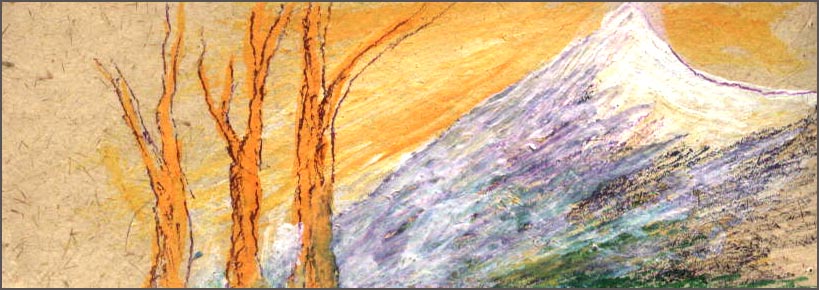

THE IMPACT OF BUDDHIST SCULPTURE AND PAINTING ON ANDHRA Dr.Sanjiva Dev |
Satavahanas. Goutamiputra Satakrni, in the first century B.C. along with the republics of Malwa, conquered the Seythians at Ujjain and eradicated them from the soil of India and hence he got the title of Sakari Vikramaditya; his son Vasishtiputra pulamavi had conquered even Magadha in 28 B. C. probably at the same period the Roman Emperor. The last Satavahana king was Yajnasri Satakarni in whose reign Satavahana Kingdom became dismembered. As the ancestors of the Satavahanas possessed one hundred vehicles they were called Satavahanas and as they had one hundred ships they were also called Satakarnis. The number of the Satavahana kings that ruled over a large part of India from their Andhra capital was thirty. Under the Satavahanas, architecture, sculpture and painting flourished immensely not only in Andhra but also in the other parts of India such as Madhya Pradesh, Maharastra, Karnataka etc. there were built Viharas, Chaityas and Stupas. Buddhist architecture consists of three types of structures for three sorts of purpose. A Vihara is one bilt for the Bddhist monks to live, a Chaitya is one built for them to pray and meditate and a stupa is built over the relics of Buddha and thus the Stupa is a tomb. Buddhist Stupas are more famous than the other two structures. Sanchi in Madhya Pradesh and Amaravati in Andhra Pradesh have been renowned for the presence of their Stupas. In fact, Viharas, Chaityas and Stupas are the base for the existence of sculpture and painting If there are no buildings there are no sculptures and paintings. Both sculptures and paintings were created for embellishing both the interior and exterior of the buildings and that is why it is said that architecture is the mother of all arts. |
The Buddhist art is not a distinct new art. It is a gradual development of the stream of Indian art that has been flowing through the ages. Intrinsically, Indian art is not Indian in its true sense; several alien influences fell over it. The influence of Irani art is to be found over the Lion-capital of Ashokan pillar. . The influence of Greeco-Roman art could be noticed in the Buddhist sculpture of Gandhara in the north-western India.That is why it is called the Greeco-Gandhara art. In the pre-Greece-Gandhara Indian art there was to be seen hardly any teces of realism; there was no anatomy at all in that tradition. Both the figures of men and gods were sculpted in such semblances, which were bereft ofbones, sinews and muscles, akin to chimerical images. But since the moment when the Greek influence has cast itself over the Buddhist art, there appeared the tracs of realistic effects, of humanistic trends, or lively expression in their faces, and of muscular consummation in their faces, and of muscular consummation in their bodies. These trends had crawled into the Amaravati scuplputers of Amaravati reveal a unique grace which is absent in other sculptures. Any art, which remains uninfluenced by other alien countries, would lose its animation and it remains static in stagnation. The art, on the other hand, which is influenced by other alien cultures shines distinctly. This truth applies specially to the sculptures of Amaravati. In Hinayana Buddhism it was banned to make to image of Buddha. Yet, the Hinayana sculptors, both in Sanachi and Amaragvati, were able to sculpt the life of Buddha without showing the image of Buddha at all; they had done it in a symbolical delincation. The Himalyana sculptors were reluctant to break the |
imposed by religion and at the same time they were equally reluctant not to sculpt the life of Buddha. Hence the Hinayana sculptors were compelled to fulfill their ambition in a different way. A symbol is more powerful than an image. As the image contains mere familiar form it is subject to some limited implications alone; it is an end in itself. But the nature of a symbol is quite different. As the symbol does not have any familiar form it has limitless implications; it is not an end in itself; it leads us into something other than itself. That is why the art creations done by both the primitive and the modern men happened to be symbolic. Indirect expression is more suggestive and more aesthtically appealing than the direct expression. The Hinayana sculptors at Amaravati, two thousand years ago, adopted the method of the symbolic expression. They chose four main event from the life of Buddha; they were vigilant enough not to show the form of Buddha in all the four sculptures which they intended to depict. The Nativity of Buddha, Maha Sambodhi or the great Enlightenment, the First Sermon and the Maha Parinirvana or the Death of Buddha were the four scenes which they executed on the column of a Chaitya. The Nativity or the birth of Buddha was depicted in the form of a lotus plant emerging out of a vessel. Lotus flowers, lotus buds, lotus leaves etc., are very enchanting to look at, and to touch them. Lotus is an object of transparent purity itself. The lotus is held in great esteem and adoration in Asia. In Poetry and art it is described and delineated abundantly in our country; the lotus-feet, the lotus-hands, the lotus- |